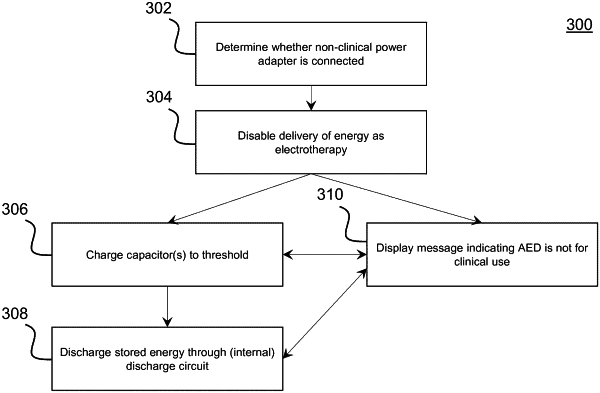| CPC A61N 1/3975 (2013.01) [A61N 1/3904 (2017.08); A61N 1/3925 (2013.01); A61N 1/3993 (2013.01)] | 41 Claims |

|
1. An automated external defibrillator, comprising:
an electrical connector configured to receive a battery pack;
at least one capacitor configured to store energy and an electrotherapy delivery circuit configured to deliver the energy externally as electrotherapy to a patient;
at least one discharge circuit configured to internally discharge energy stored in the at least one capacitor, wherein the energy is not provided to the patient when internally discharged;
a non-clinical power adapter configured to be received by the electrical connector; and
at least one processor configured to:
determine whether the non-clinical power adapter is electrically coupled to the electrical connector,
determine whether the automated external defibrillator recognizes the non-clinical power adapter, and
enable power to be supplied to the automated external defibrillator from the non-clinical power adapter if the automated external defibrillator recognizes the non-clinical power adapter,
wherein enabling power to be supplied to the automated external defibrillator from the non-clinical power adapter comprises enabling the automated external defibrillator to operate in a non-clinical mode, and
wherein enabling the automated external defibrillator to operate in a non-clinical mode comprises:
disabling delivery of energy externally as electrotherapy;
charging the at least one capacitor to a predetermined threshold that is less than a minimum energy setting for clinical use; and
discharging the stored energy from the at least one capacitor internally through the at least one discharge circuit.
|